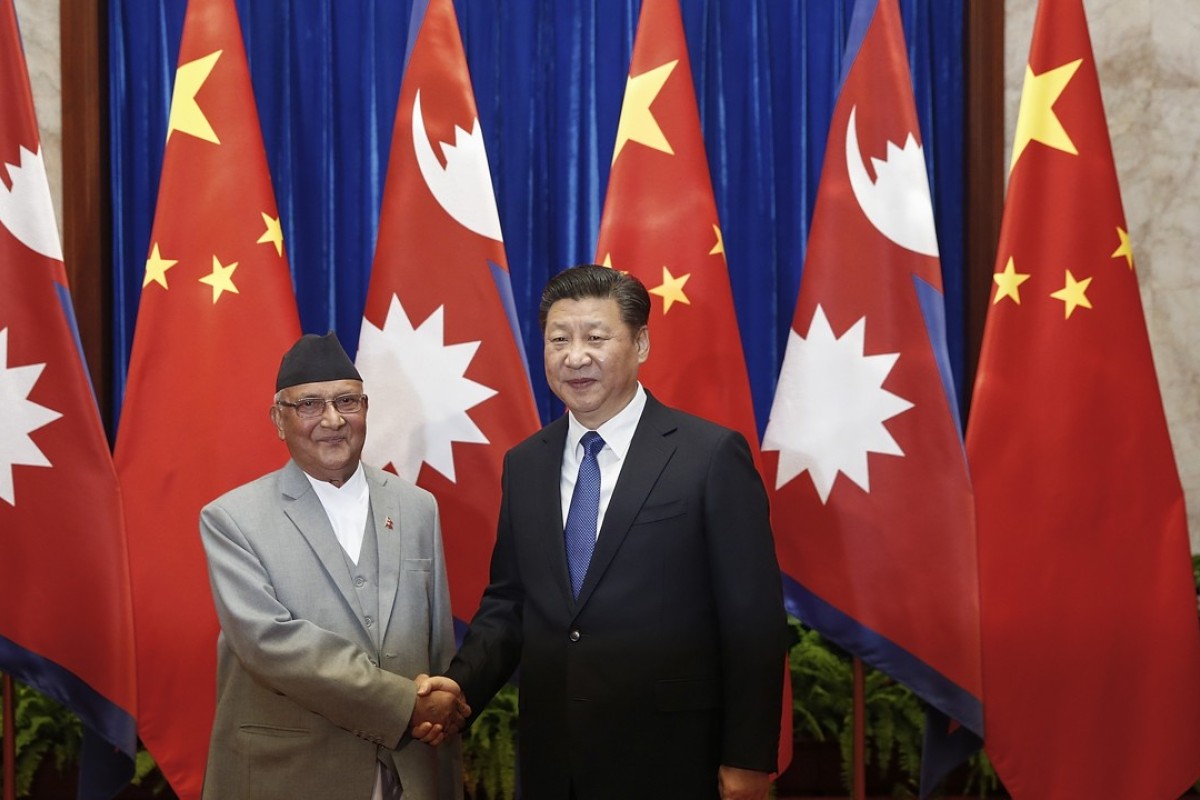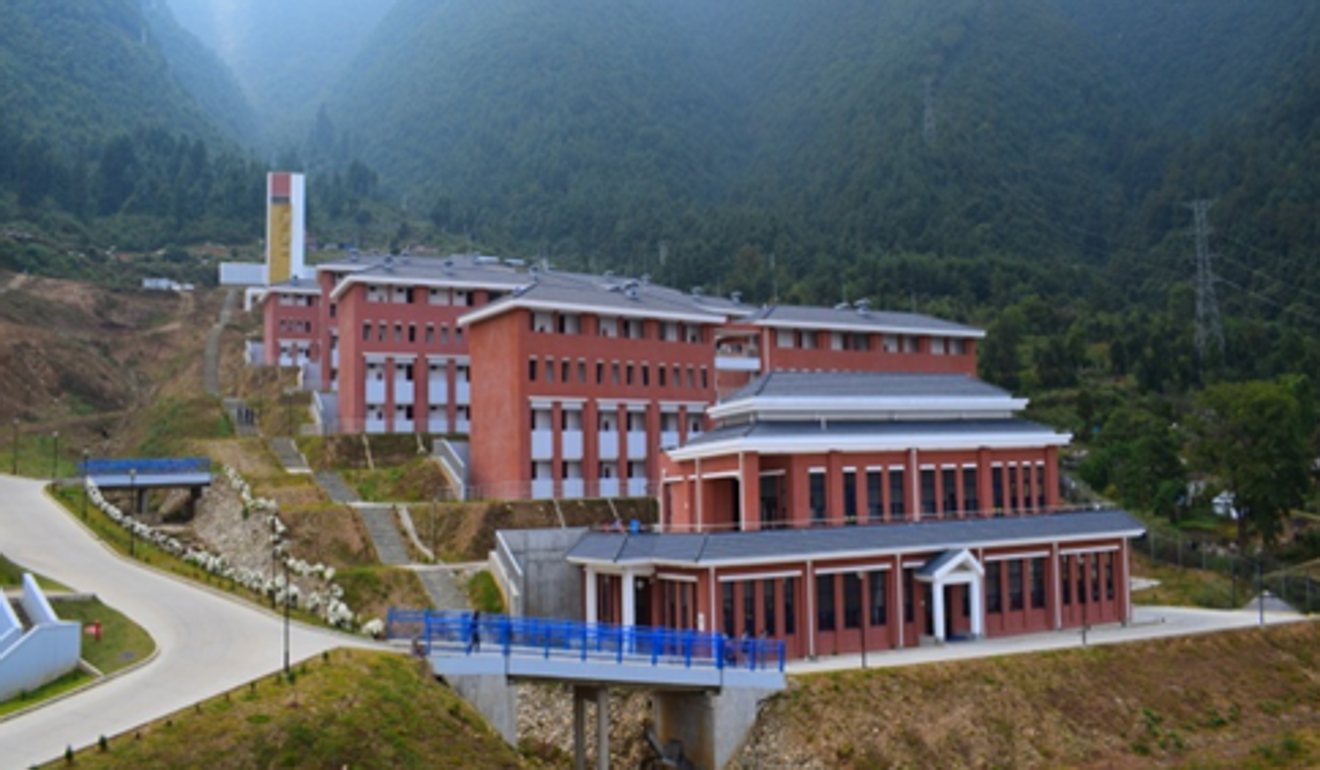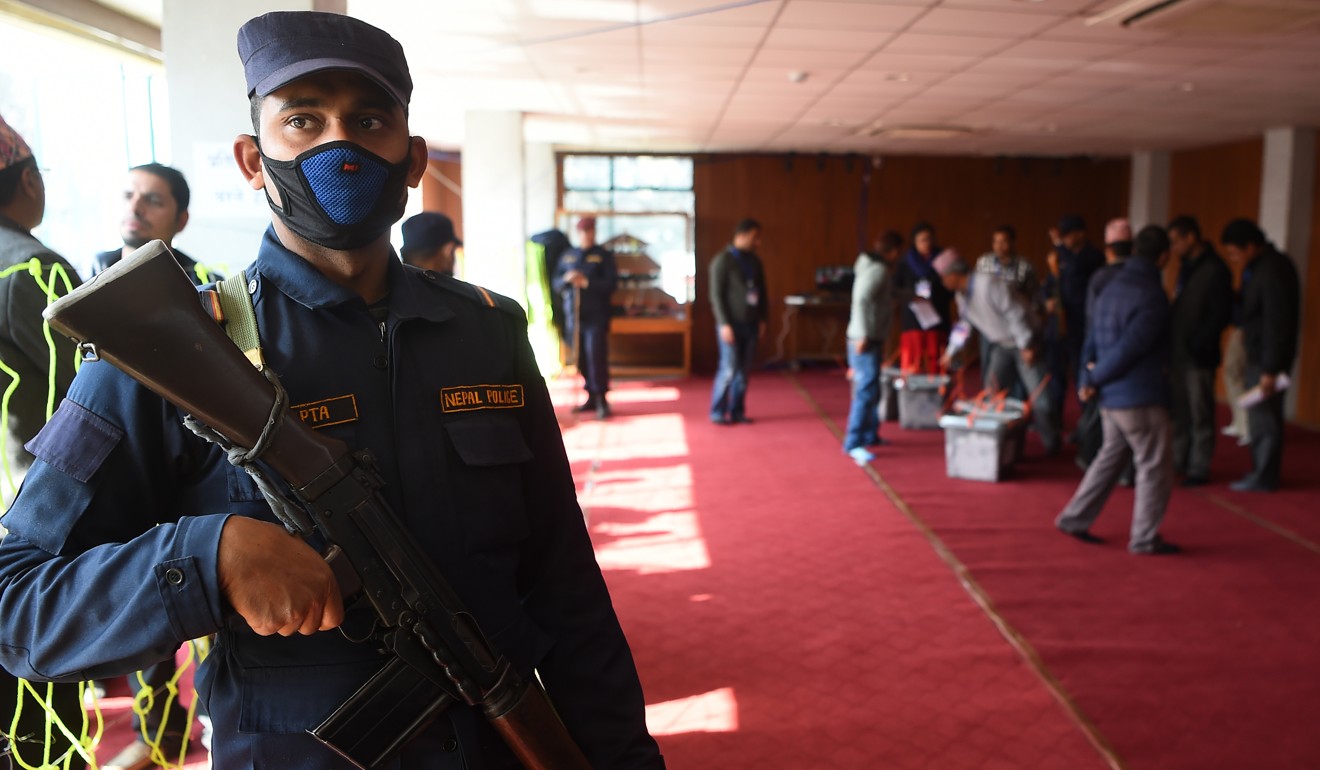Hendrik_2000
Lieutenant General
Therefore my guess that this military build-up is primarily as a way to test out these new assets rather than to act aggressive as a primary motive (though it will be seen as aggressive, regardless and logically so by her neighbours).
I don't thik so if that is the case rotational deployment should be enough but adding fuel depot, underground munition storage, barrack, new apron, parking space for military vehicle all tell tale sign of permanent deployment. Add to that increase training and deployment of J10B, J11B the frontline fighter of PLAAF. If it for testing they don't need to deploy 1 or 2 regiments
China upgrades airspace defense in west to counter threat from India: military specialist
By Shan Jie Source:Globaltimes.cn Published: 2018/2/20 16:50:13
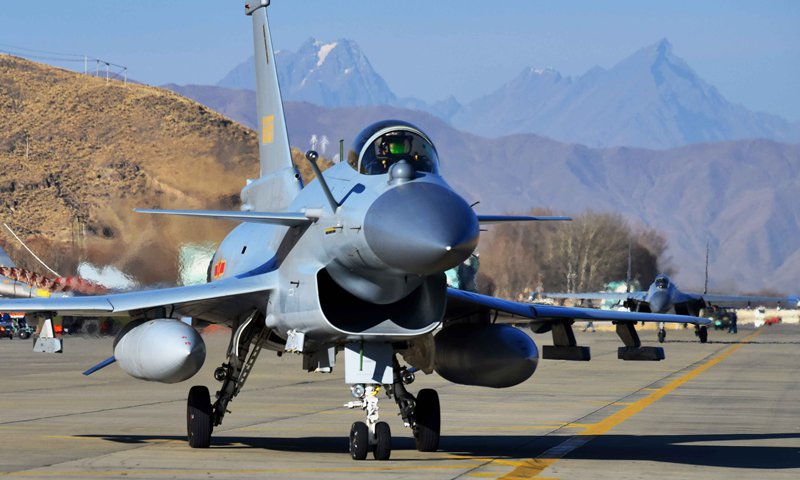
A J-10 fighter jet attached to an aviation brigade of the air force under the PLA Western Theater Command taxies on the runway during an aerial combat training exercise in Western China on Feb.13, 2018. Photo:eng.chinamil.com.cn
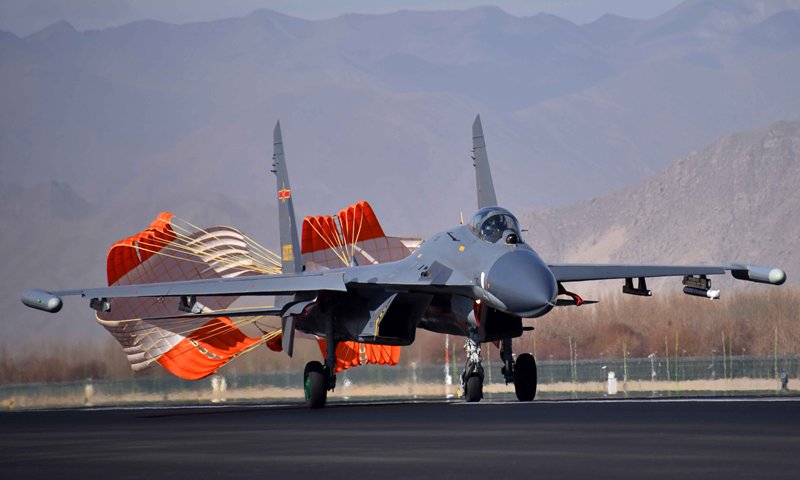
A J-11 fighter jet attached to an aviation brigade of the air force under the PLA Western Theater Command deploys a drogue parachute to slow itself after finishing an aerial combat training exercise in Western China on Feb. 13, 2018. Photo:eng.chinamil.com.cn
China is upgrading its Western Theater Command in order to confront any threat from India, a Chinese military specialist said after photographs of a J-10 jet flying over the high-altitude plateau in western China were released by the People's Liberation Army (PLA) during the Spring Festival holiday.
The pictures posted on the English version of the PLA website show a J-10 fighter jet and J-11 fighter jets conducting aerial combat training exercises in Western China on February 13, two days before Spring Festival.
The jets are attached to an aviation brigade of the air force under the PLA Western Theater Command, the post said.
The Western Theater Command is mainly responsible for mountain warfare at the border area with India. It is significant for China to strengthen control of airspace over the mountainous region, Song Zhongping, a Chinese military expert and TV commentator, told the Global Times on Tuesday.
"Strengthening the 3.5-generation fighter jets or even stationing more advanced fighters in the Western Theatre Command has been urgent for the PLA," Song said, adding that such upgrades have been usually first conducted in south and east theatre commands.
Considering that India possesses 3rd-generation fighter jets, China's stationing of its 3.5-generation jets would be able to deal with any current threat from India, said Song. "With India importing new jets, China will continue strengthening its fighter jets in the Western Theatre Command," Song said.
During this year's week-long Spring Festival holiday, the PLA has not stop training. The PLA website reported that the PLA Air Force conducted training at the foot of the Qilian Mountains in Northwest China's Gansu Province, and a navy aviation regiment was on patrol in Jiaodong Peninsula, East China's Shandong province.
The PLA website also reported on Monday that the North China Sea Fleet of the PLA Navy on Saturday conducted training exercises in the Yellow Sea.
During Spring Festival, real combat trainings have been included in patrol, such as submarine ambush, enemy warship attacks and mine clearing and laying, in preparation to face any emergency situation, an officer with the fleet said.
Last edited:

